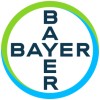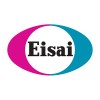
Safety Study of CAT-8015 to Treat Advanced B-cell Non-Hodgkin Lymphoma and Chronic Lymphocytic Leukemia...
Non-Hodgkin LymphomaChronic Lymphocytic LeukemiaThe primary objectives of this study are to determine the maximum tolerated dose (MTD) or optimal biologic dose (OBD) and safety profile of CAT-8015 in participants with relapsed or refractory advanced B-cell NHL (diffuse large B-cell lymphoma [DLBCL], follicular lymphoma [FL], mantle cell lymphoma [MCL]) or CLL.

CART19 to Treat B-Cell Leukemia or Lymphoma That Are Resistant or Refractory to Chemotherapy
Hematopoietic/Lymphoid CancerAdult Acute Lymphoblastic Leukemia in Remission21 moreThis is a Pilot/Phase I, single arm, single center, open label study to determine the safety, efficacy and cellular kinetics of CART19 (CTL019) in chemotherapy resistant or refractory CD19+ leukemia and lymphoma subjects. The study consists of three Phases: 1) a Screening Phase, followed by 2) an Intervention/Treatment Phase consisting of apheresis, lymphodepleting chemotherapy (determined by the Investigator and based on subject's disease burden and histology, as well as on the prior chemotherapy history received), infusions of CTL019, tumor collection by bone marrow aspiration or lymph node biopsy (optional, depending on availability), and 3) a Follow-up Phase. The suitability of subjects' T cells for CTL019 manufacturing was determined at study entry. Subjects with adequate T cells were leukapheresed to obtain large numbers of peripheral blood mononuclear cells for CTL019 manufacturing. The T cells were purified from the peripheral blood mononuclear cells, transduced with TCR-ζ/4-1BB lentiviral vector, expanded in vitro and then frozen for future administration. The number of subjects who had inadequate T cell collections, expansion or manufacturing compared to the number of subjects who had T cells successfully manufactured is a primary measure of feasibility of this study. Unless contraindicated and medically not advisable based on previous chemotherapy, subjects were given conditioning chemotherapy prior to CTL019 infusion. The chemotherapy was completed 1 to 4 days before the planned infusion of the first dose of CTL019. Up to 20 evaluable subjects with CD19+ leukemia or lymphoma were planned to be dosed with CTL019. A single dose of CTL019 (consisting of approximately 5x10^9 total cells, with a minimal acceptable dose for infusion of 1.5x10^7 CTL019 cells) was to be given to subjects as fractions (10%, 30% and 60% of the total dose) on Day 0, 1 and 2. A second 100% dose of CTL019 was initially permitted to be given on Day 11 to 14 to subjects, providing they had adequate tolerance to the first dose and sufficient CTL019 was manufactured.

Donor Stem Cell Transplant in Treating Patients With High-Risk Chronic Lymphocytic Leukemia or Small...
LeukemiaLymphomaRATIONALE: Giving low doses of chemotherapy before a donor stem cell transplant helps stop the growth of cancer cells. It may also stop the patient's immune system from rejecting the donor's stem cells. Also, monoclonal antibodies, such as rituximab, can find cancer cells and either kill them or deliver cancer-killing substances to them without harming normal cells. The donated stem cells may replace the patient's immune cells and help destroy any remaining cancer cells (graft-versus-tumor effect). Sometimes the transplanted cells from a donor can also make an immune response against the body's normal cells. Giving tacrolimus, sirolimus, and methotrexate after the transplant may stop this from happening. PURPOSE: This phase II trial is studying how well donor stem cell transplant works in treating patients with high-risk chronic lymphocytic leukemia or small lymphocytic lymphoma.

Mantel Cell Lymphoma Efficacy of Rituximab Maintenance
Mantle Cell LymphomaRandomized, open-label, phase III study to evaluate the efficacy of rituximab maintenance therapy in patients aged between 18 and 65 years inclusive undergoing first-line treatment for mantle cell lymphoma and exhibiting a response after autologous transplantation.

Blood Stem Cell Transplant With Low Dose Chemotherapy for Relapsed Follicular Non-Hodgkin's Lymphoma...
LymphomaNon-HodgkinBlood stem cell transplants are one treatment option for people with lymphoma or other types of blood cancers. For this type of treatment, family members or unrelated donors with a similar tissue type usually donate their blood stem cells to the transplant patients. This study will evaluate the effectiveness of a type of blood stem cell transplant that uses lower doses of chemotherapy in people with relapsed follicular non-Hodgkin's lymphoma (NHL).

Rituximab and CVP Plus Interferon for Follicular Non Hodgkins Lymphoma (NHL)
Non-Hodgkin's LymphomaRituximab plus CVP and Interferon chemoimmunotherapy for newly diagnosed Follicular Lymphoma with FLIPI index >2

Open Label, Dose Escalation Trial of Oral Eg5 Kinesin-spindle Inhibitor 4SC-205 in Patients With...
Advanced and Incurable Solid TumorsMalignant LymphomasThe purpose of the study is to investigate safety and tolerability of repeated ascending oral doses of 4SC-205 in patients with advanced and incurable solid tumors or malignant lymphomas.

Study for Evaluation of Efficacy and Safety of SH L 749 to Indolent B-cell Non-Hodgkin's Lymphoma...
Non-Hodgkin's LymphomaLymphoma3 moreThe purpose of this study is to investigate the antitumor effect and safety of the product for relapsed or refractory indolent B-cell non-Hodgkin's lymphomas.

A Study of ONTAK and CHOP in Newly Diagnosed, Peripheral T-Cell Lymphoma
LymphomaT-Cell1 moreStudy of ONTAK and CHOP (chemotherapy drugs) to find out their ability to make Peripheral T-cell lymphoma disappear (for any period of time) and potentially lengthen life. The study will also compare what kind of side effects these drugs cause and how often they occur. The hypothesis is that patients with newly diagnosed peripheral T-Cell lymphoma, when given ONTAK + CHOP, will tolerate the treatment and will have a 20% improvement in response rate when compared to CHOP alone.

Study of ONTAK® to Treat Cutaneous T-Cell Lymphoma (CTCL)
LymphomaT-Cell1 moreThe purpose of this research study is to evaluate how effective ONTAK is in the treatment of cutaneous T-cell Lymphoma (CTCL) and determine whether the presence of a type of protein called CD25 on the cancer cells makes a difference in how the body responds to the treatment. The hypothesis is that there is no difference in response rate for patients whose tumor cells are CD25 positive or negative.
